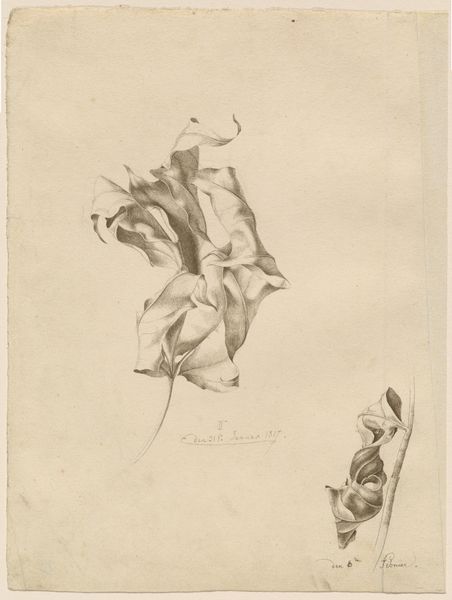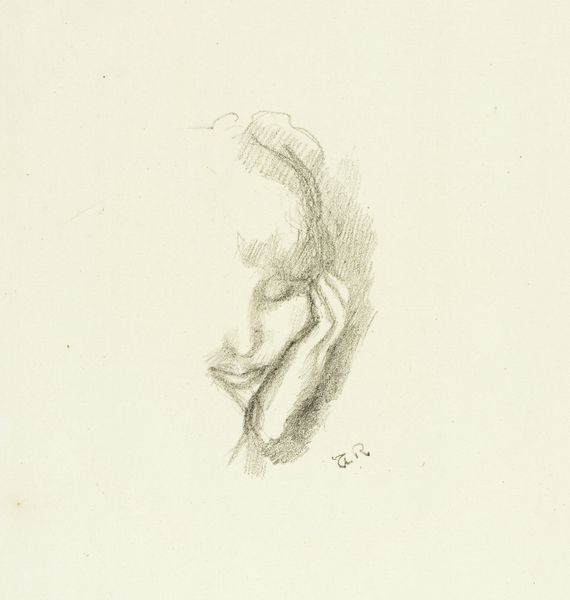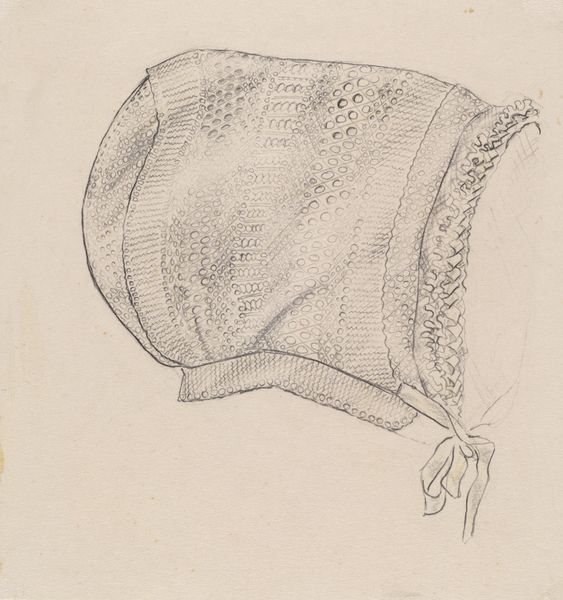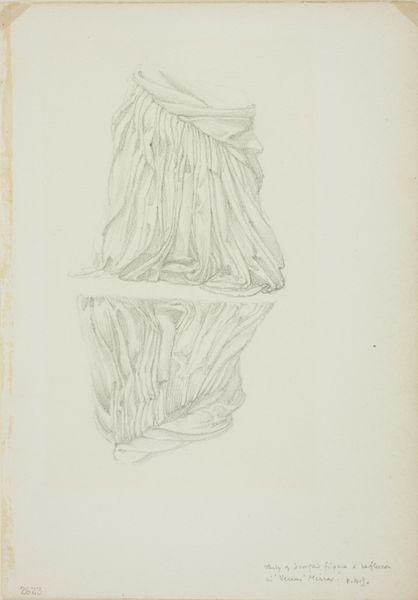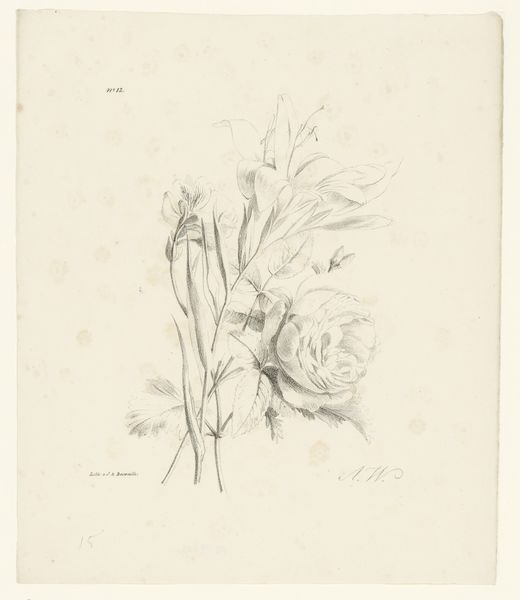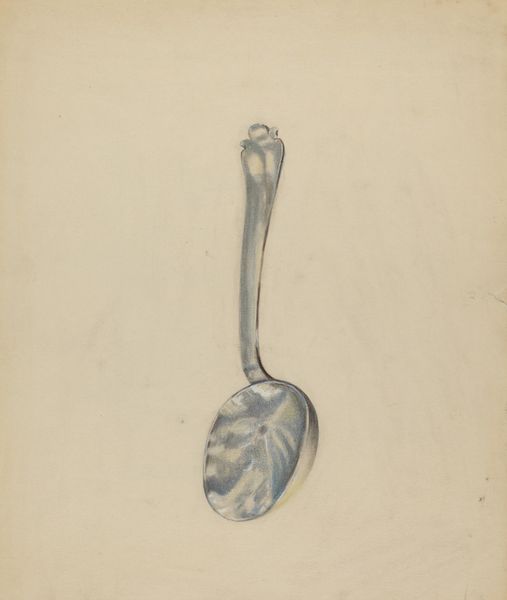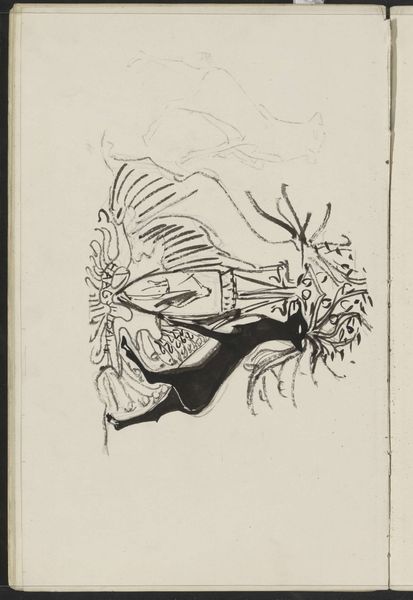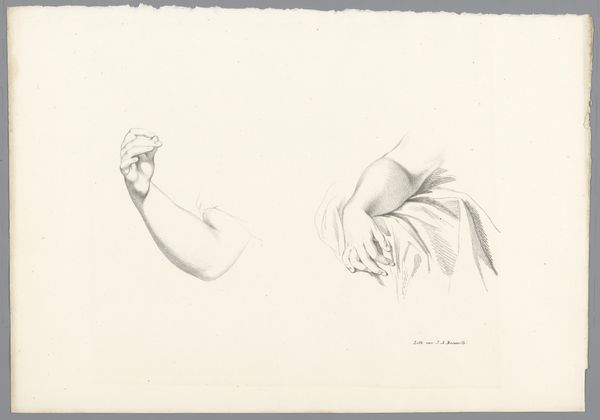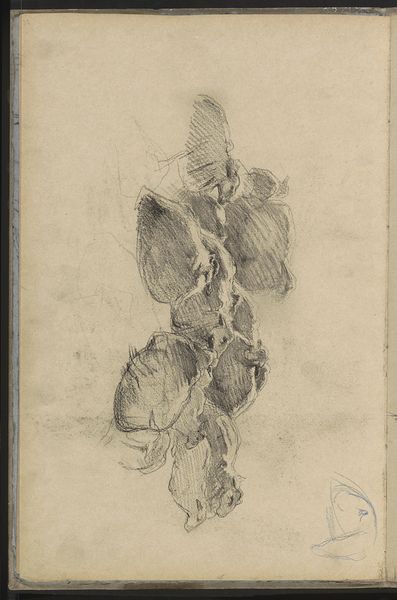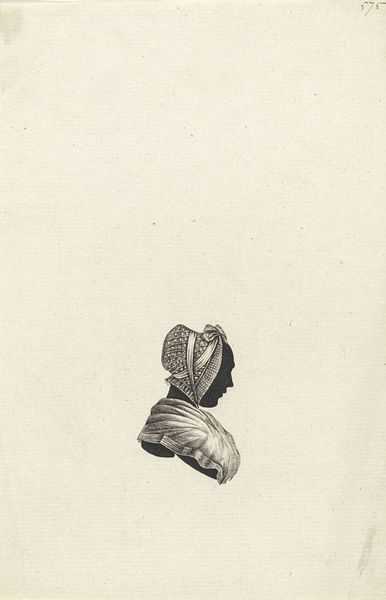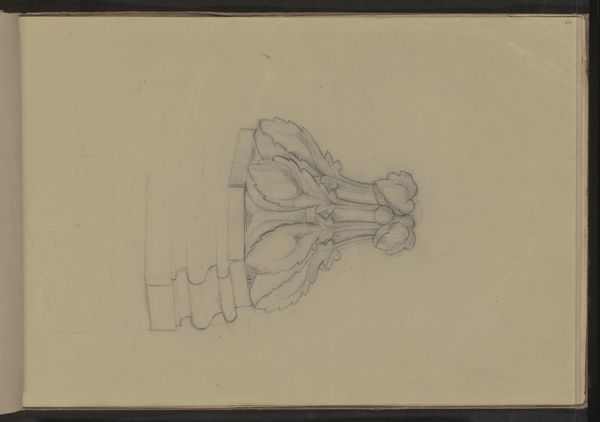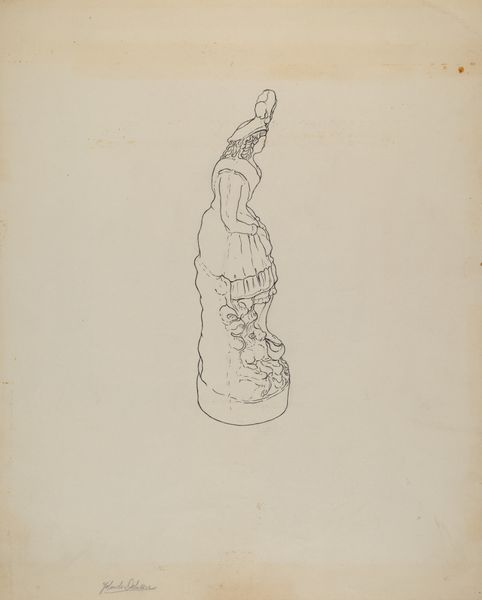
drawing, paper, dry-media, pencil
#
portrait
#
pencil drawn
#
drawing
#
amateur sketch
#
toned paper
#
light pencil work
#
pencil sketch
#
paper
#
dry-media
#
personal sketchbook
#
pencil drawing
#
pencil
#
sketchbook drawing
#
pencil work
#
sketchbook art
Dimensions: overall: 36 x 28 cm (14 3/16 x 11 in.)
Copyright: National Gallery of Art: CC0 1.0
Editor: Here we have Mary E. Humes's "Wedding Bonnet," a pencil drawing from around 1937. There’s a delicate, almost wistful quality to it. What strikes you about this piece? Curator: Immediately, I think about the historical context of this bonnet, around 1937, when traditional expectations of women were clashing with a growing desire for autonomy. What do you think this bonnet *means* in that moment? Is it a symbol of marital confinement, or something else? Editor: That's a really interesting question! I hadn’t considered that. I mostly saw it as…pretty. Curator: But "pretty" can be powerful! Consider the labor involved in creating such an object, and who would have worn it. Was it handmade? Passed down? Understanding the material conditions and the woman’s place within them provides a crucial lens. Think about what women's labour represented and the societal pressures of marriage, motherhood, domesticity. Can the image be read against those values? Editor: I suppose I was viewing the work from a 21st-century perspective. Thinking about gender roles in the 1930s definitely shifts my perception. Did Humes include the smaller back view to challenge conventional representations? Curator: Exactly! It disrupts a singular perspective, doesn't it? Are we meant to examine it literally or deconstruct the notion of the bride? Perhaps the multiple perspectives invite us to see the woman wearing it from many points of view. Humes challenges viewers not just to passively observe the image, but to question and analyze societal expectations imposed upon women at that time. What do you think Humes is trying to convey by showing us the *back* view? Editor: This has been really enlightening. Now, looking at it again, I see a statement about societal expectations. Curator: Precisely! Art provides invaluable insight, not only to appreciate craftsmanship, but also to reflect on history's deep-seated tensions.
Comments
No comments
Be the first to comment and join the conversation on the ultimate creative platform.
